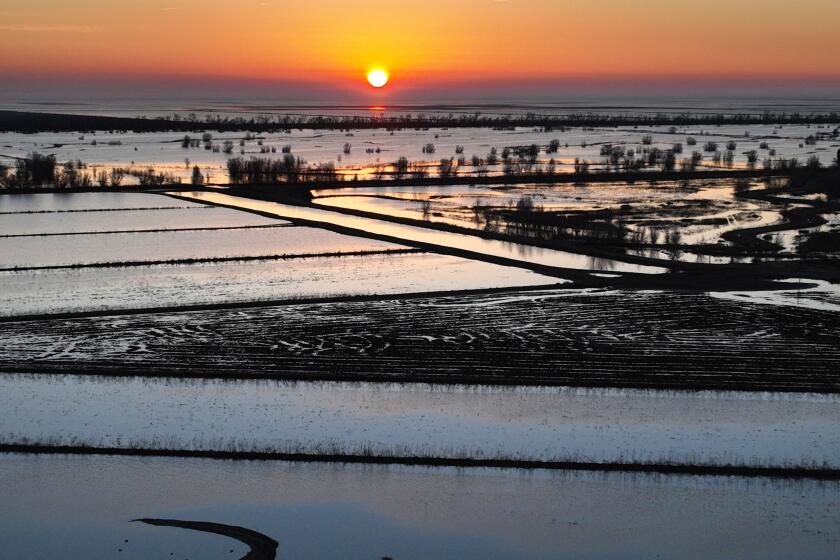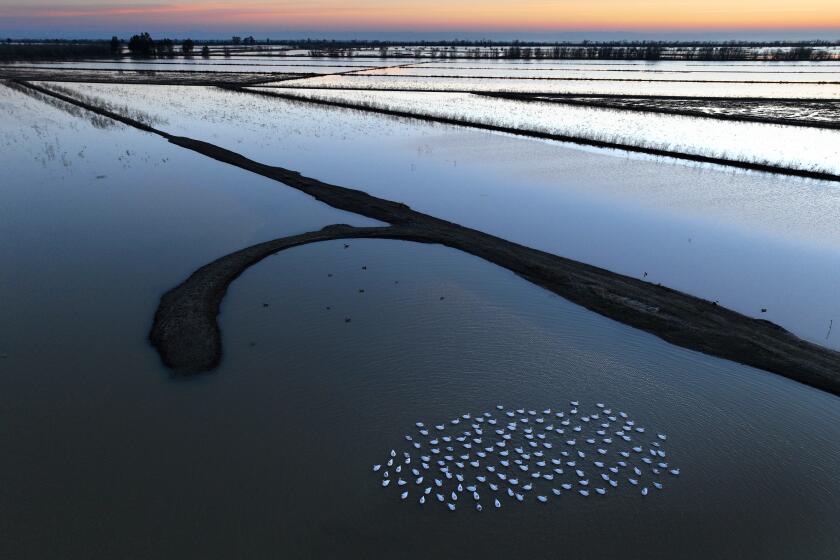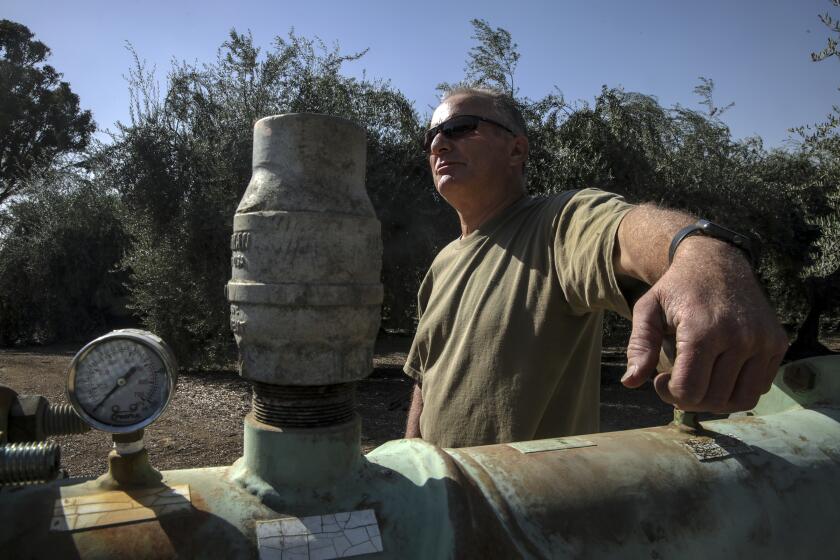Thousands of California wells are at risk of drying up despite landmark water law
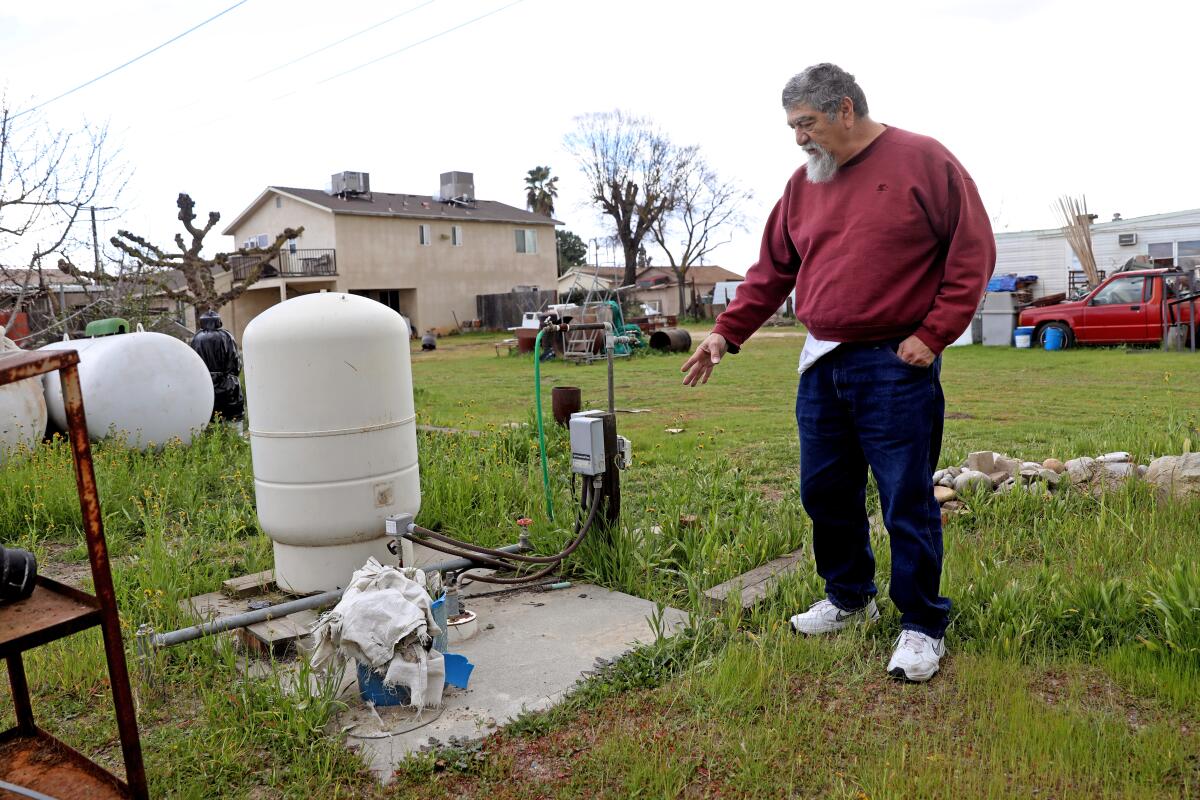
Even though California enacted sweeping legislation nearly a decade ago to curb excessive agricultural pumping of groundwater, new research predicts that thousands of drinking water wells could run dry in the Central Valley by the time the law’s restrictions take full effect in 2040.
The study, published this month in the journal Scientific Reports, casts critical light on how the state is implementing the 2014 Sustainable Groundwater Management Act. The research reveals that plans prepared by local agencies would allow for heavy pumping to continue largely unabated, potentially drawing down aquifers to low levels that would leave many residents with dry wells.
The researchers warned that unless local agencies adopt more stringent measures or come up with backup plans, many people in the Central Valley could be left without access to drinking water, and low-income communities could be severely affected.
Study authors reviewed 60 local groundwater plans throughout the Central Valley and examined a key metric called minimum thresholds — the aquifer levels groundwater agencies have set as lower limits while they implement the groundwater act’s rules and restrictions over the next 16 years.
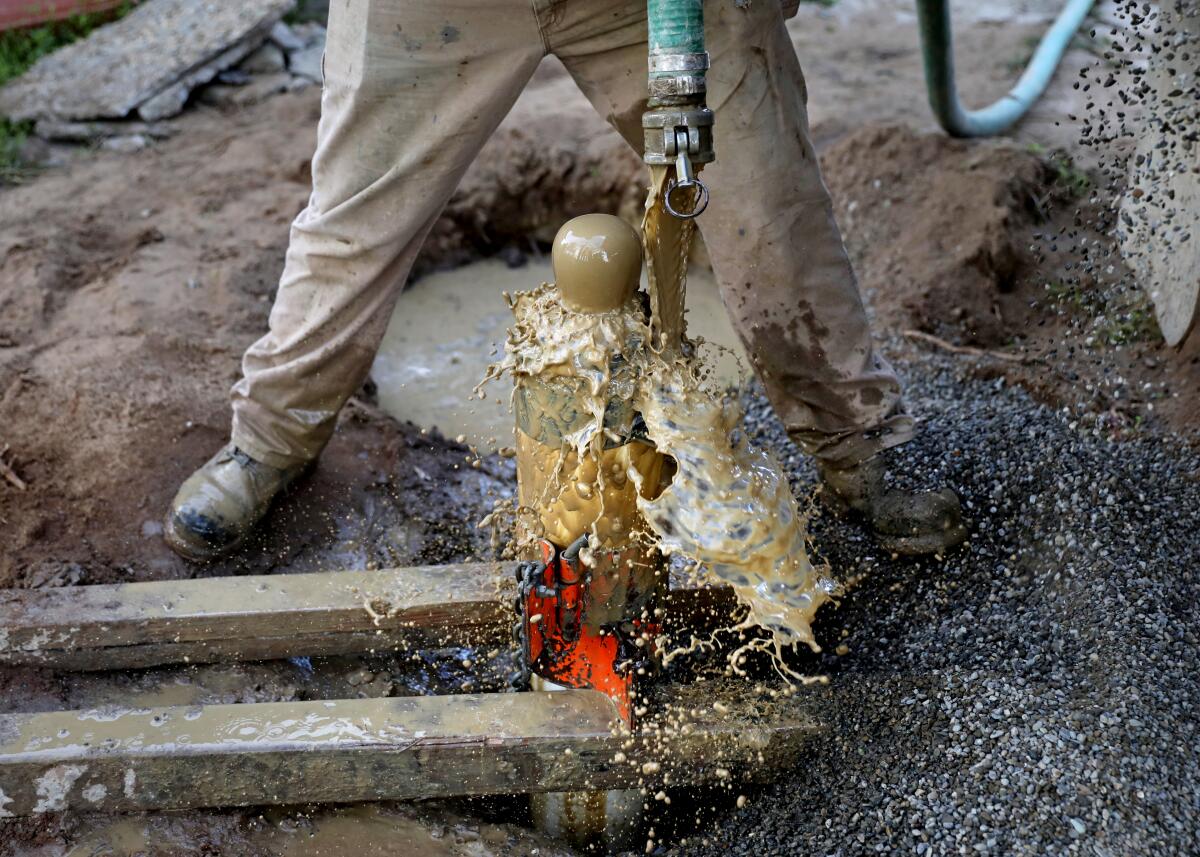
They found that more than 5,000 domestic wells would be left completely dry, while an additional 4,000 household wells would be “partially dewatered,” leading to problems such as low water pressure or damaged pumps.
In all, they said, more than 9,200 household wells and 1,000 public supply wells could fail if water levels are allowed to decline to the plans’ minimum thresholds.
“The numbers are quite large and have the potential to impact many, many people,” said Darcy Bostic, a researcher with the West Sacramento-based. nonprofit Rural Community Assistance Corp., who led the study.
Bostic and her colleagues found that plans submitted by local agencies would allow major declines in groundwater between now and 2040. They said the thresholds allow for aquifer levels to decline, on average, 80 feet below 2019 levels, while some agencies set their thresholds more than 200 feet below current levels.
Such large drops would closely resemble “status-quo, business-as-usual” declines driven by unrestricted pumping, the researchers said. They urged state and local water officials to strengthen protections for drinking water wells and take steps to mitigate the effects.
“If we are not careful or aware of this, impacts to drinking water access and even to agricultural economies may be severe,” Bostic said. “I hope that there’s a conversation around how we can support particularly rural and lower-income communities that will be impacted by declining groundwater levels.”
In the San Joaquin Valley, 1,800 families rely on state-funded water deliveries to fill household tanks. The list of those waiting for fixes has been growing.
The researchers said contingency plans could include securing funds to lower people’s pumps, drill new wells or connect homes to other water sources.
Few Central Valley plans currently include an evaluation of how many wells could fail, authors said. They recommend that state officials require local agencies to analyze vulnerable wells, and study how stricter thresholds could reduce the number of failures.
Overall, researchers estimated that 32% of the 29,567 domestic wells analyzed are at risk under the plans that agencies submitted, as well as 21% of the 5,259 wells that supply public water systems — a burden that’s likely to fall disproportionately on rural disadvantaged communities.
The findings add to a body of research that has identified failings and weaknesses in implementation of the Sustainable Groundwater Management Act.
The legislation requires groundwater basins that are deemed to be in “critical overdraft” to halt overpumping and meet locally developed “sustainability” goals by 2040.
Excessive groundwater pumping has long been depleting aquifers in California’s Central Valley. Now, scientists say the depletion is accelerating.
The law broadly defines sustainability as managing and using groundwater “in a manner that can be maintained during the planning and implementation horizon without causing undesirable results,” one of which is chronic lowering of groundwater levels.
SGMA lets local groundwater agencies decide how to achieve sustainability — with input from state regulators — and researchers say many plans fail to say how they will address overpumping.
Rich Pauloo, a hydrogeologist and data scientist who co-wrote the study, questioned how business-as-usual groundwater extraction could continue until 2040 and then “just magically stop.”
Allowing groundwater pumping to continue at these rates “is like driving a car downhill towards a wall — you have to apply the brakes gradually as you descend,” Pauloo said. “If you charge downhill at full speed and expect to stop on a dime at the bottom, you’re likely to crash through the wall and keep going.”
As climate change intensifies California’s drought cycle, there is widespread agreement among scientists, government officials and water managers that halting chronic groundwater depletion is critically important.
Farms in the Central Valley have long depended on heavy groundwater pumping to produce crops such as almonds and grapes. Increased pumping during droughts has led to especially large drawdowns.
According to state data, about 1,500 dry household wells were reported last year. This year — despite an extremely wet winter — more than 400 dry wells have been reported.
In parts of California’s Central Valley, farmlands are being used to soak up storm water and replenish depleted groundwater.
Paul Gosselin, deputy director of the state Department of Water Resources’ sustainable groundwater management office, said the study provides valuable analysis.
“Obviously, having projections out with those number of wells projected to go dry is disturbing and is counter to what the promise of the Sustainable Groundwater Management Act was,” Gosselin said. “But I will say their analysis and report was at a point in time of when those plans were submitted.”
Gosselin said state officials raised similar concerns as they reviewed plans, and local officials have since made changes to many plans. He praised the study as “outstanding work” and said state officials are interested in collaborating with the researchers to do further analysis over time.
This year, the Department of Water Resources declared local groundwater plans inadequate in six areas of the San Joaquin Valley where excessive pumping has left many residents with dry wells.
That action triggered intervention by the State Water Resources Control Board, which plans to hold hearings on whether to put local agencies on probationary status. State regulators could eventually step in to require stronger measures.
The study also examined how many wells are at risk in different areas. It found that areas with large numbers of projected well failures included those where state officials have approved plans — such as Kings and Merced counties — as well as areas where officials deemed plans inadequate, such as Kaweah and Tule.
“We’re going to continue to work with these basins and do incremental improvements,” Gosselin said. “There’s going to be a lot of changes, even to these approved basins’ plans over time.”
The Department of Water Resources also announced $187 million in state grants this month to support groundwater management efforts, such as projects to capture stormwater, recharge aquifers and equip monitoring wells.
NASA satellites have measured a large gain in California water supplies, but groundwater in the Central Valley remains severely depleted after years of drought.
The researchers said that nearly 40% of the wells in disadvantaged communities are at risk, and that some of these communities lack nearby monitoring wells that track aquifer levels.
They said dry wells have disproportionately affected low-income and Latino communities, and prior research has found that 84% of California’s disadvantaged communities lack formal representation in groundwater sustainability agencies.
“From my perspective, this is a complete failure to really take care of all groundwater users, especially those who are the most vulnerable,” said Linda Estelí Méndez-Barrientos, a co-author and assistant professor at the University of Denver. “The state needs to figure out how to play a better role to actually protect communities.”
If the plans aren’t strengthened, Méndez-Barrientos said, they will in effect establish “sacrifice zones” where many people will be left to struggle with dry wells and find other sources of drinking water.
“Either protect the wells or create tangible alternatives. That also may take years to implement. So they need to come up with a plan,” Méndez-Barrientos said. “Where is the plan for a just transition that is going to make sure that these communities have drinking water?”
Well-drilling and pumping continue to draw down groundwater in California’s Central Valley. Calls are growing for stronger legislation and state intervention.
Researchers with the Public Policy Institute of California have estimated that by 2040, agricultural water supplies could decrease by 20%, forcing growers to stop cultivating large portions of the valley’s farmlands.
But Méndez-Barrientos’ team found that many plans ignored solutions that limit water demand, such as switching to less water-intensive crops, restricting pumping or leaving some croplands fallow.
The researchers said that the findings point to a need to clarify ambiguities in the law, and that state agencies could provide clearer metrics to guide local efforts.
“I think there is a broader question about what we’re calling sustainable,” Bostic said. “Should the definition of sustainability be the status quo?”
In another recent study, scientists examined groundwater sustainability plans statewide and found various failures. Their analysis showed that about 60% of wells — both agricultural wells and domestic wells — are either not covered or not protected by the plans.
They also found 91% of ecosystems that depend on groundwater in regulated areas aren’t protected from going dry.
“We’re already seeing ecosystems dry up across the state, and we’re seeing wells go dry,” said Melissa Rohde, a co-author of the study. “In order to really protect those users, the groundwater sustainability agencies need to incorporate their needs.”
Rohde and her colleagues found that many groups of stakeholders had little involvement in planning and decision-making, and that small farms and disadvantaged communities are “less integrated and protected.” They also found that when diverse stakeholders are integrated in planning and decision-making, they benefit by being better protected under the plans.
“There is a lot of opportunity to improve the plans so that we are achieving groundwater sustainability and also protecting those that are most vulnerable,” Rohde said.
“The main culprit of the problem is that we’re pumping too much groundwater,” Rohde said. “We need to address that if we’re going to achieve any sustainability.”
Meanwhile, state legislators have passed a bill, AB 779, that aims to improve the legal process when disputes over groundwater land in court. The legislation would make various changes to the process, including adding a requirement that a court take into account the needs of disadvantaged communities and small farmers.
Among other provisions, the bill states that a court may refer questions to the State Water Resources Control Board and request officials to report back.
The bill, which is awaiting Gov. Gavin Newsom’s signature, was introduced by Assemblymember Lori Wilson (D-Suisun City), who called it “an effort to make the groundwater adjudication process more accessible, efficient and transparent for all water users.”
UCLA law students Adrianne Davies, Owen McAleer and Gabi Rosenfeld, who did research and testified on the measure in the Legislature, wrote in a recent blog post that the bill would “level the playing field for all groundwater users, particularly small farmers and farmers of color, and would align the adjudication process more closely with the goals of SGMA.”


